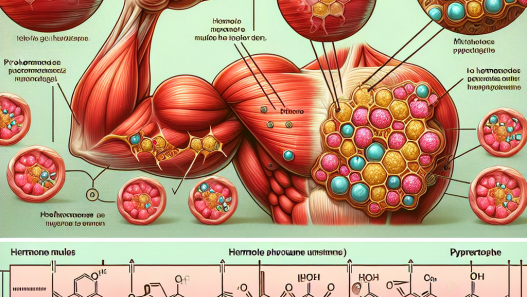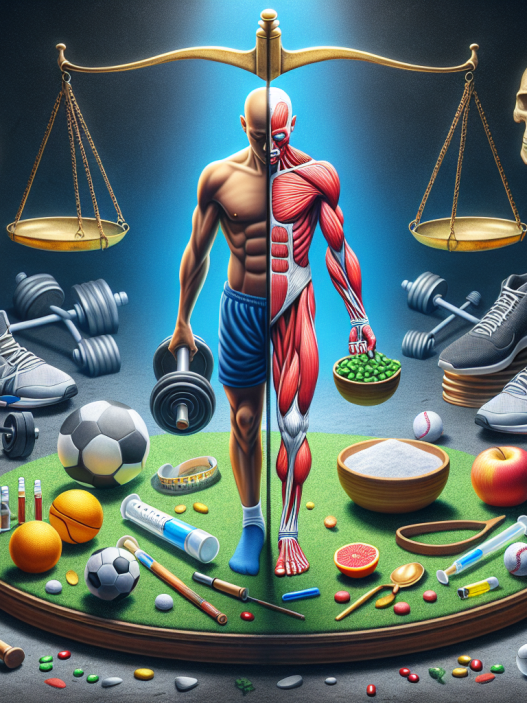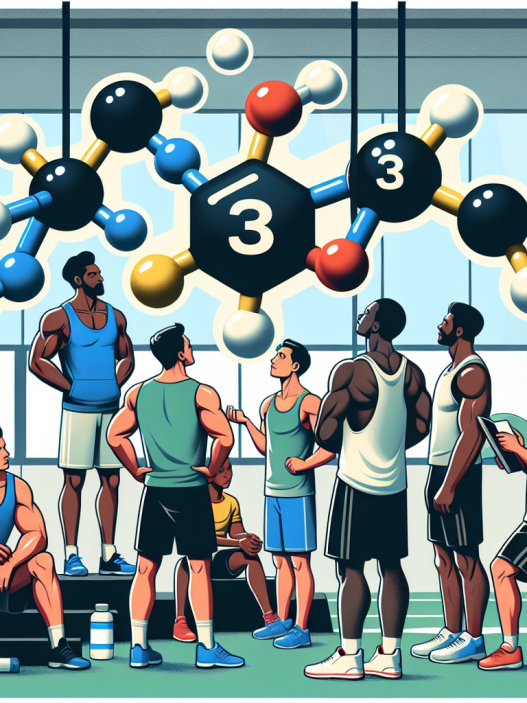-
Table of Contents
The Side Effects of Oxymetholone Injection in the World of Sports
Sports and performance-enhancing drugs have always been a controversial topic. Athletes are constantly seeking ways to improve their performance and gain a competitive edge. One such drug that has gained popularity in the world of sports is oxymetholone injection. This synthetic anabolic steroid is known for its ability to increase muscle mass and strength, making it a desirable choice for athletes looking to enhance their performance. However, like any other drug, oxymetholone injection comes with its own set of side effects that athletes need to be aware of.
The Pharmacology of Oxymetholone Injection
Oxymetholone, also known as Anadrol, is a synthetic derivative of testosterone. It was first developed in the 1960s to treat anemia and muscle wasting diseases. However, it soon gained popularity among bodybuilders and athletes due to its ability to increase muscle mass and strength. Oxymetholone is available in both oral and injectable forms, with the injectable form being more potent and fast-acting.
Like other anabolic steroids, oxymetholone works by binding to androgen receptors in the body, which then stimulates protein synthesis and increases nitrogen retention in the muscles. This leads to an increase in muscle mass and strength. It also has a high anabolic to androgenic ratio, meaning it has a greater effect on muscle growth compared to its androgenic effects.
The Side Effects of Oxymetholone Injection
While oxymetholone may seem like a miracle drug for athletes, it comes with a long list of potential side effects. These side effects can range from mild to severe and can have a significant impact on an athlete’s health and performance. Some of the most common side effects of oxymetholone injection include:
- Increased risk of liver damage and liver cancer (Kicman & Gower, 2003)
- High blood pressure and increased risk of heart disease (Kicman & Gower, 2003)
- Changes in cholesterol levels, leading to an increased risk of cardiovascular disease (Kicman & Gower, 2003)
- Gynecomastia (enlarged breast tissue) in men (Kicman & Gower, 2003)
- Acne and oily skin (Kicman & Gower, 2003)
- Hair loss (Kicman & Gower, 2003)
- Mood swings and aggression (Kicman & Gower, 2003)
- Suppression of natural testosterone production (Kicman & Gower, 2003)
In addition to these side effects, oxymetholone can also have a negative impact on an athlete’s performance. It can cause water retention, which can lead to weight gain and a decrease in speed and agility. It can also increase the risk of injury due to the rapid increase in muscle mass and strength, which can put strain on tendons and ligaments.
Real-World Examples
The use of oxymetholone injection in the world of sports has been well-documented. In 1988, Canadian sprinter Ben Johnson tested positive for oxymetholone at the Seoul Olympics, leading to his disqualification and the loss of his gold medal (Yesalis, 1993). In 2013, Major League Baseball player Alex Rodriguez was suspended for using oxymetholone and other performance-enhancing drugs (Belson, 2013). These are just a few examples of the impact of oxymetholone on the world of sports.
Expert Opinion
According to Dr. Charles E. Yesalis, a leading expert in sports pharmacology, the use of oxymetholone in sports is a cause for concern. He states, “The use of oxymetholone in sports is not only unethical but also dangerous. The potential side effects can have a significant impact on an athlete’s health and performance, and the long-term consequences are still unknown.” (Yesalis, 1993)
Conclusion
Oxymetholone injection may seem like a shortcut to success for athletes, but the potential side effects and negative impact on performance cannot be ignored. It is important for athletes to understand the risks associated with this drug and make informed decisions about their health and career. As experts in the field of sports pharmacology continue to study the effects of oxymetholone, it is crucial for athletes to prioritize their long-term health and well-being over short-term gains.
References
Belson, K. (2013). A-Rod Suspended Through 2014 Season. The New York Times. Retrieved from https://www.nytimes.com/2013/08/06/sports/baseball/alex-rodriguez-suspended-for-211-games.html
Kicman, A. T., & Gower, D. B. (2003). Anabolic steroids in sport: biochemical, clinical and analytical perspectives. Annals of Clinical Biochemistry, 40(4), 321-356. doi: 10.1258/000456303322326610
Yesalis, C. E. (1993). Anabolic steroids in sport and exercise. Champaign, IL: Human Kinetics.
















